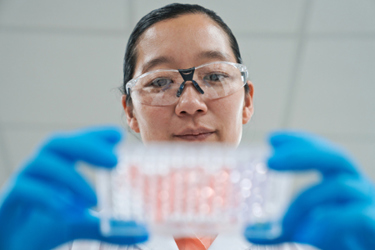Extracellular Vesicles: Building The Next Therapeutic Modality With End-To-End Product And Service Support
By Nisa Renault, FUJIFILM Cellular Dynamics Inc., and Daniel DeVido, FUJIFILM Biotechnologies

Extracellular vesicles (EVs) are attracting attention for their potential as therapeutic tools and drug delivery systems. These natural messengers are unlikely to trigger immune responses, can cross the blood-brain barrier, and can be engineered to target specific cells or tissues. This versatility makes them suitable for a wide range of therapeutic applications.
Furthermore, EVs derived from human cells are relatively easy to manufacture in large quantities. Their inherent stability allows for simpler storage and transportation compared to other biopharmaceuticals. Cryopreserved EVs require only dry ice, while lyophilized formats can be shipped at room temperature. This stability is another key advantage, as EVs outperform synthetic carriers in biocompatibility and safety, particularly over lipid nanoparticles (LNPs). Additionally, EVs can circulate throughout the body, reaching target sites and delivering their therapeutic cargo directly to cells, influencing their behavior.
Despite the promise of EVs, challenges remain to their more widespread commercialization. Analyzing and characterizing these complex biological mixtures is difficult and lacks a standardized approach. Additionally, current manufacturing processes require optimization to improve production efficiency and ensure consistent product quality. These hurdles need to be addressed to fully integrate EVs into the biopharmaceutical pipeline.
Get unlimited access to:
Enter your credentials below to log in. Not yet a member of Bioprocess Online? Subscribe today.
